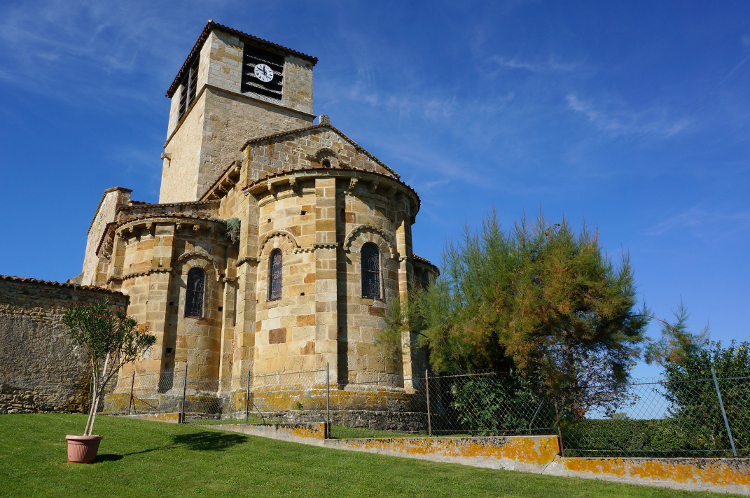
Lustrous basilicas nestle among rough mountain ranges, medieval walls hug hilltop villages, and stained-glass windows catch the glint of sunsets dropping behind the Chaîne des Puys. Towers that serve as scenic lookouts speak to the Auvergne’s battle-torn history, and remarkable cathedrals were snatched from destruction during centuries of religious unrest. In a region resplendent with architecture, creating a shortlist is tough; but these splendid constructions marry architectural drama with nature and history, in the perfect introduction to this charismatic part of France.
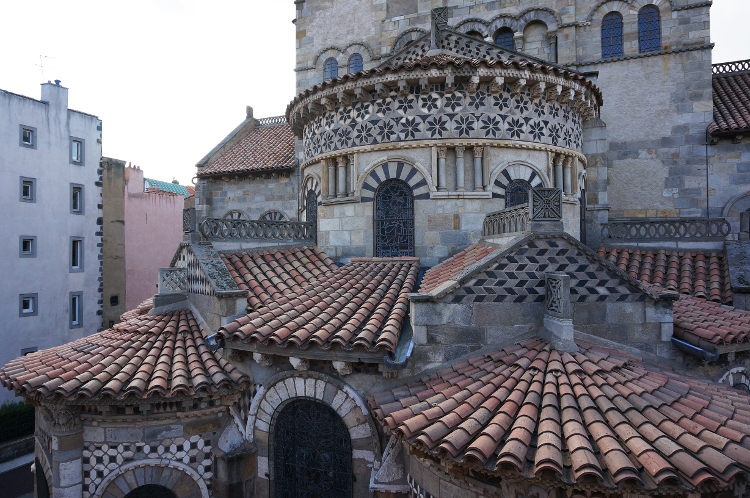
The Auvergne’s most eye-bulging basilica smoothly combines elements that should feel out of place in a single building. Graphic monochrome patterns dapple its bulging chevet (headpiece), while weather-worn medieval reliefs jut from the south portal. Coral coloured tiles form a pleasing contrast with floral mosaics made from dark volcanic stone. For fans of Romanesque architecture – the medieval style known for sturdy forms, formidable towers and semi-circular arches – the Basilique Notre Dame du Port typifies the genre in the Auvergne region. But anyone can appreciate this profusion of mosaics, stained glass and elegant sculpture. For all its various elements, this blushing sandstone church looks right at home within the maze of streets in Clermont-Ferrand’s old market area. A gilding from Unesco in 1998 in part spurred a major makeover, completed in 2008, meaning this medley of architectural flourishes has never looked finer.
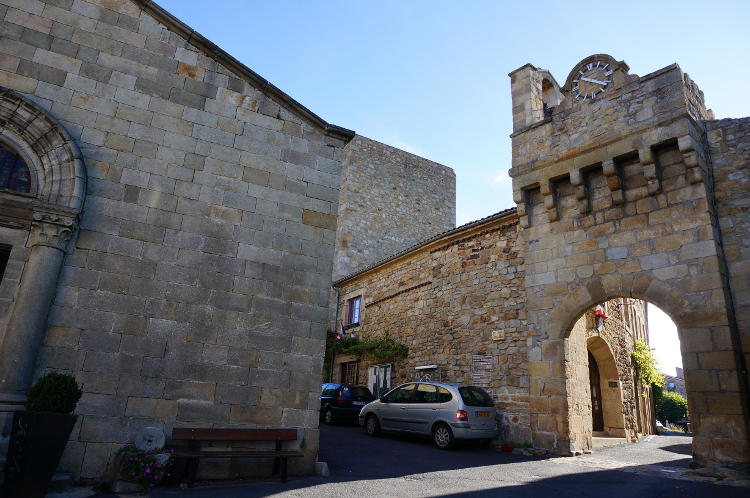
Poised on its rocky perch, the village of Montpeyroux (after ‘mont pierreux’, ‘stony hill’) lives up to its name. This tiny village (population 357) has remnants of military history scattered around its cobbled streets, though archives detailing their history are scarce. Among five watchtowers and stocky walls built in golden arkose (sandstone), the citadel’s most splendid feature is the 14th-century entryway. Looming over the town is the 13th-century donjon, castle keep. During the second half of the 12th century this crenellated tower housed the local lord and served as storage; today it’s a viewing point for visitors to admire the scenery from 30m above Montpeyroux’s flower-strewn eaves and terracotta rooftops. Sleepy Montpeyroux was a centre for wine production until phylloxera (vine-eating aphids) wrought havoc on the industry, which in turn slashed the village’s population. But following careful restoration and being crowned as one of France’s most beautiful villages, Montpeyroux’s labyrinthine alleys and charismatic old walls are finding admirers once more.
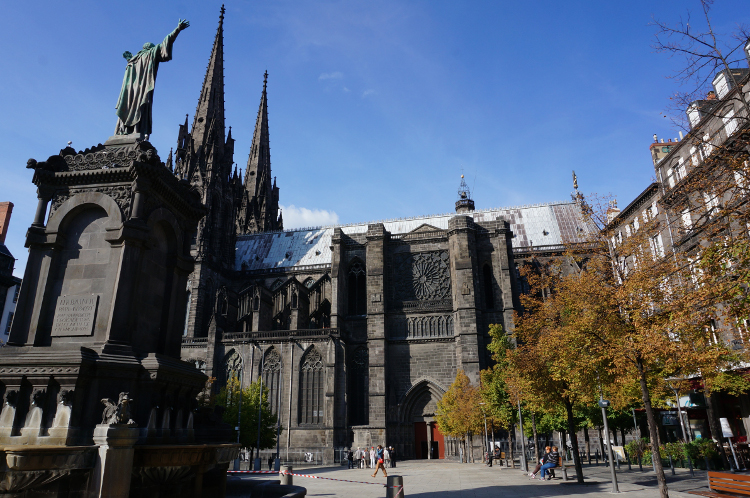
Amid a sea of apricot-coloured roofs, this dark, double-pronged cathedral is an arresting sight. Many buildings and landmarks in Clermont-Ferrand owe architectural flourishes to volcanic stone: cobbled walkways and gushing city centre fountains all bear a distinctive pumice finish. But the cathedral, Clermont-Ferrand’s Gothic masterpiece, is made entirely from slabs of volcanic stone, from gurning gargoyles to the tips of its 108m-high twin turrets. Centuries of diligent craftwork – the cathedral was built from the 13th right up to the 19th century – were nearly brought to a destructive end when French Revolutionaries wanted to smash the church; only the offer of the cathedral as a revolutionary gathering place and landmark saved it from its fate.
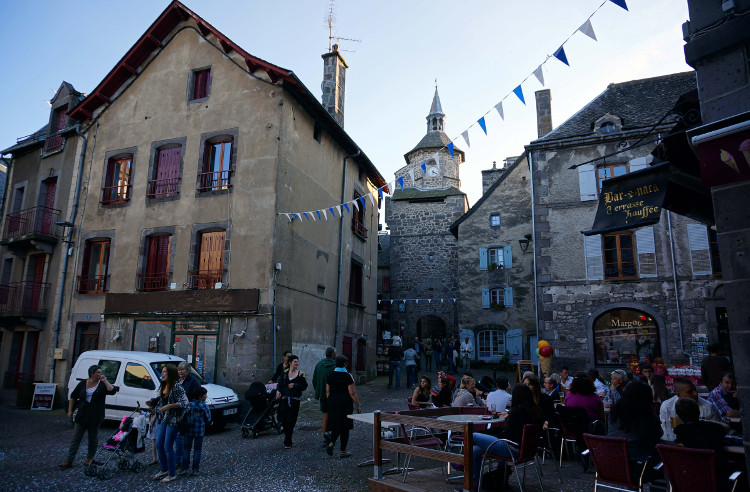
To reach the cobbled alleyways of 1000m-altitude Besse-et-Saint-Anastaise, most visitors walk beneath the old belfry, part of Besse’s last surviving monumental gateway. Six-metre-high fortified walls and watchtowers were authorised by Charles VII during the 15th century; this was the height of the Hundred Years’ War, during which French villages were on high alert against attacks from England’s House of Plantagenet. Besse’s monumental gateway was designed to be sturdy enough to fend off attacks by battering ram. Its octagonal belfry, modified in the 16th century, is crowned with a wolf’s head-shaped weathervane and a still-pealing bell, and remains the most recognisable landmark in this town. Today the only invaders march towards Besse’s rustic brasseries, eager for a carafe of Saint-Pourçain wine and a heaving plate of truffade (greased potatoes drowned in cheese).
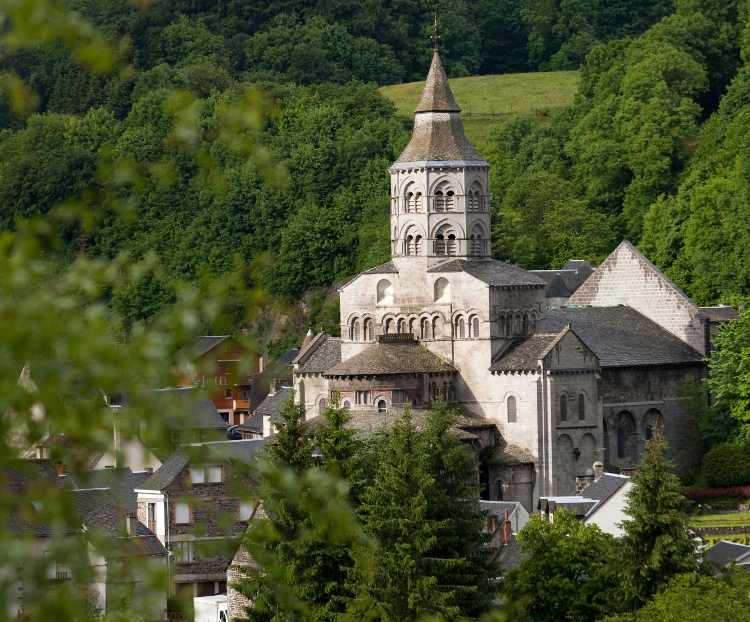
Tiny Orcival is a peaceable spot, despite the beastly origins of its name (the village is named for ‘vallée de l'ours’, ‘bear valley’). Today, this mountain-set village largely lures hikers and skiers. But since the 6th century, pilgrims have also been drawn to this unassuming spot. The reason lies deep within its stately slate-grey Romanesque masterpiece, the Basilique Notre-Dame. The structure standing today, with its octagonal belltower, was built on top of sacred tombs wrecked by Norman invaders. Since the 12th-century rebuild it has stood unchanged, a graceful silhouette watching over this otherwise sleepy village. The basilica’s beauty is best revealed in minuscule details, like animal and human-headed hinges fastening the south door to its frame. Within, the crypt keeps safe the Lady of Orcival icon, the focus of Ascension Day pilgrimages here.
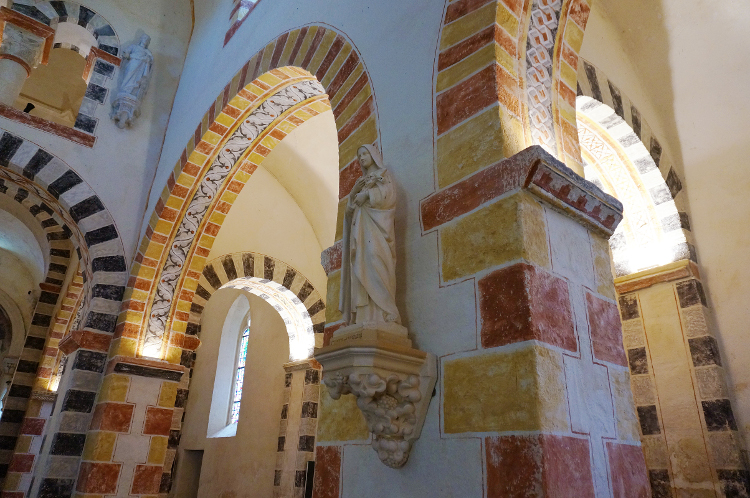
The warm sandstone exterior is pleasant enough. But the real wonder begins within this church in Glaine-Montaigut, a small village 30 minutes’ drive from Clermont-Ferrand. Built in the Romanesque manner out of subtly different shades of sandstone, Eglise Saint Jean isn’t considered one of the Auvergne’s five major churches (along with the basilicas in Orcival and Clermont-Ferrand, elaborate edifices in Saint-Austremoine d’Issoire, Saint-Saturnin and Saint-Nectaire grab the other top spots). Nonetheless, painstaking restoration in the 1990s has restored the lustre to this church. Inside, geometric designs in navy and ochre radiate out from its inner arches, seemingly supported by squat figures representing Atlas. A rich mythical menagerie adorns Saint-Jean, with centaurs, griffins and monkeys lurking on columns and within sculpted reliefs. With glowing frescoes of a throned Christ that date back to the 1200s, it’s an inspiring place to hear the whisper of Auvergne history.